Minds On
Sources of natural resources

There are many natural resources found around the world. How and why do we use them?
Guiding Question: What factors might impact resource development?
Throughout this learning activity, this guiding question will appear. As you learn and engage with the lesson, consider how your response to this question might alter and strengthen. You will be responding to this question in the consolidation as a part of your final task.
Press Sustainability to reveal a definition of sustainability and how it relates to natural resources.
Sustainability is defined as living within the natural and human limits of available resources. These resources may include Earth’s natural resources and/or the economic and human resources of a society. Sustainability also implies equitable distribution of resources and benefits (where everyone gets a fair share), which requires an understanding of the interrelationships between natural environments, societies, and economies.
Explore the following two sets of images and descriptions. The first set displays some of the world’s natural resources and the second displays uses of these natural resources.
After exploring both sets, you will attempt to connect the usages to the corresponding natural resources.
Examples of resources
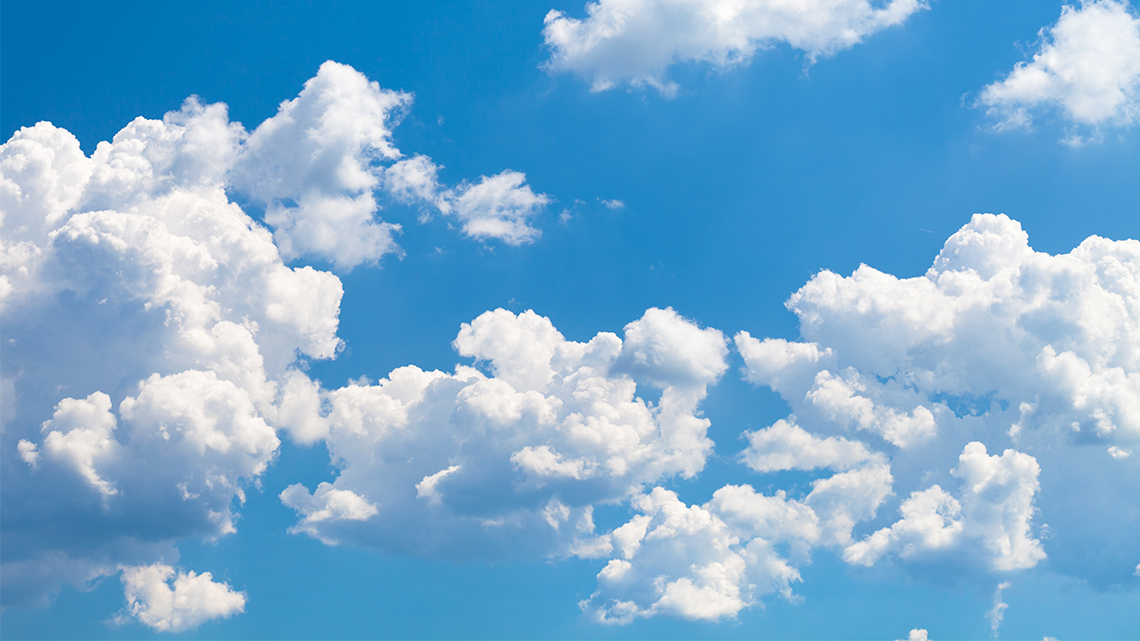
The natural resource of air is found everywhere. It is a vital resource because without it, plants and animals would not exist.
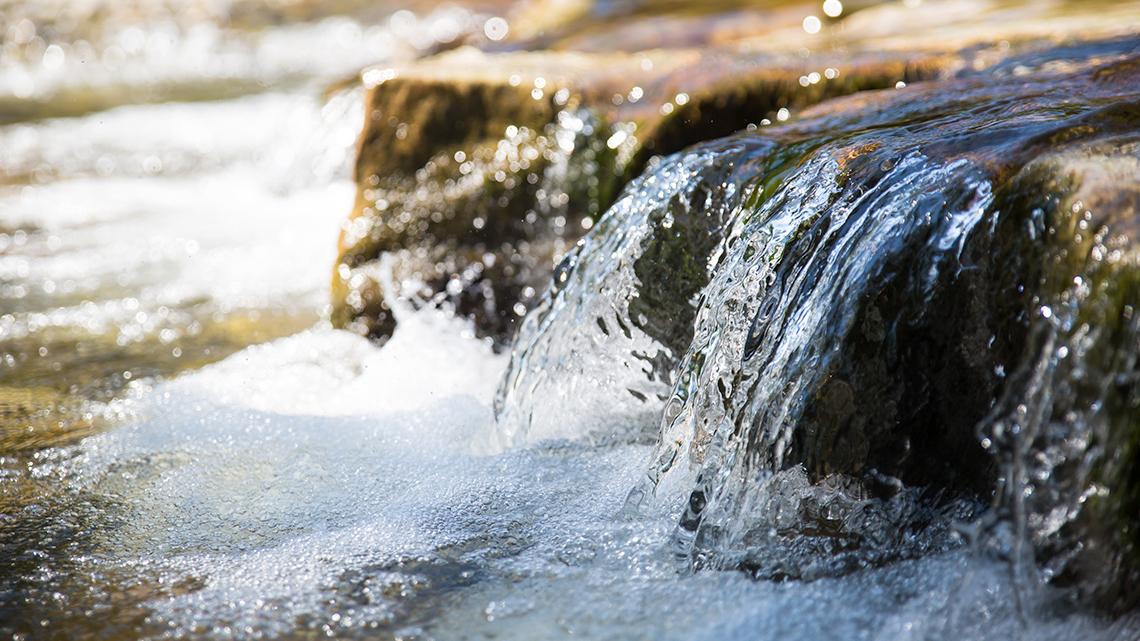
Water is life. Water is a natural resource that is found over 70 percent of the Earth’s surface. All living plants and organisms need this natural resource to survive. We find this natural resource in forms such as oceans, lakes, rivers, streams, ice (for now), and groundwater.

This image of a path between trees in a forest was taken in Banff, Alberta. Forests are an important natural resource that are found around the world. Forests produce oxygen, help maintain the carbon dioxide levels of the Earth and are home to hundreds of species of plants and animals, as well as many Indigenous communities.
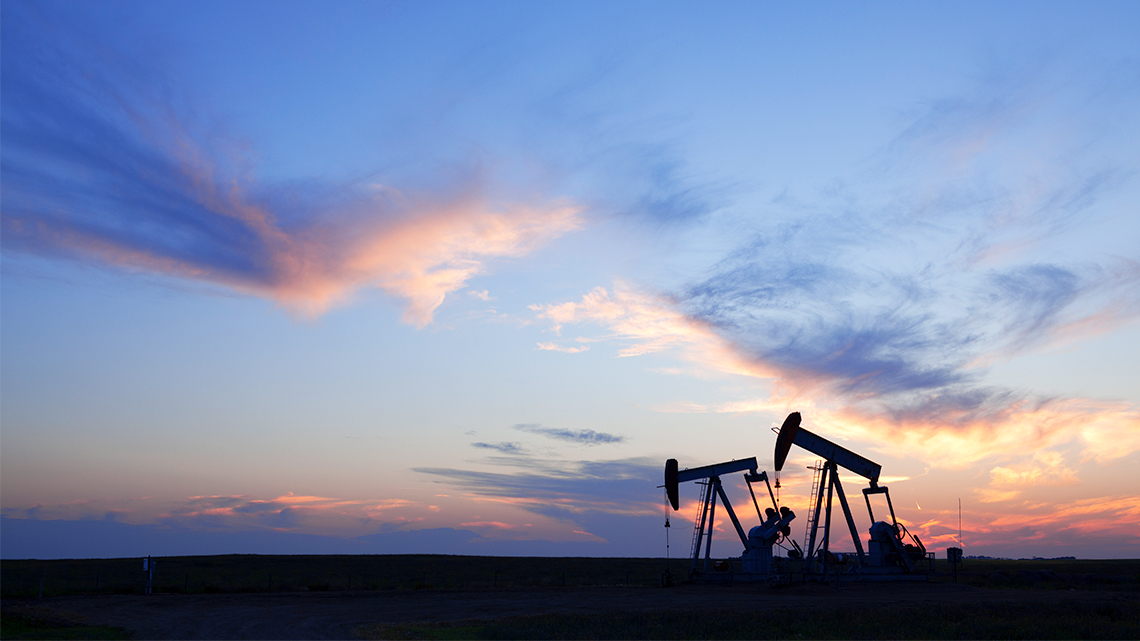
This is an image of two oil pumping jacks in the prairies of Saskatchewan. Oil is a natural resource that is found deep under the Earth’s surface and has been there for millions of years as plants and animals have fossilized and then liquefied. Mixed with the pressure and heat under the Earth’s surface, oil has been created over a long period of time. It can also be found deep in the ocean’s floor.
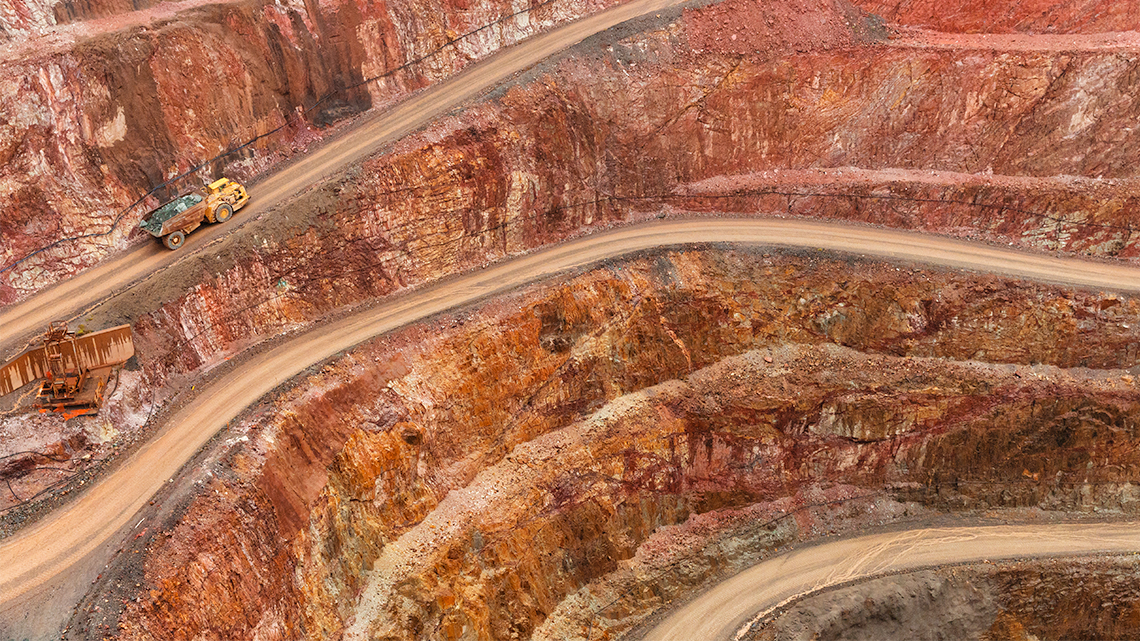
This image shows a truck driving along the wall of a gold mine in Australia. There are many levels of road along this mineral wall. The Earth’s crust contains a wide variety of minerals. Many minerals are found deep in the Earth’s crust, but some are found on the surface of the Earth as well. There is a large amount of minerals found in Canada. Unlike oil, minerals are not formed from plant and animal matter but are natural geological formations.
Examples of resource uses

This image shows a variety of electrical outlets from around the world. The typical person deals with electricity as a consumer, plugging various appliance into outlets like these. Electricity is made from a variety of natural resources, sometimes by capturing flows, and sometimes through combustion (burning). Because moving electricity over long distances is very inefficient, electricity must be created and distributed locally, often using different methods and levels of power output. Which natural resources can be used to make electricity?

This is an image of a clay tiles being used as roofing materials. In areas with warmer climates like Mexico or Southern Europe, one of the many uses of this natural resource is the creation of clay tiles for use in the building of roof tiles. The tiles are very durable and allow air flow to keep the buildings cool. Which natural resources are used to make these tiles?
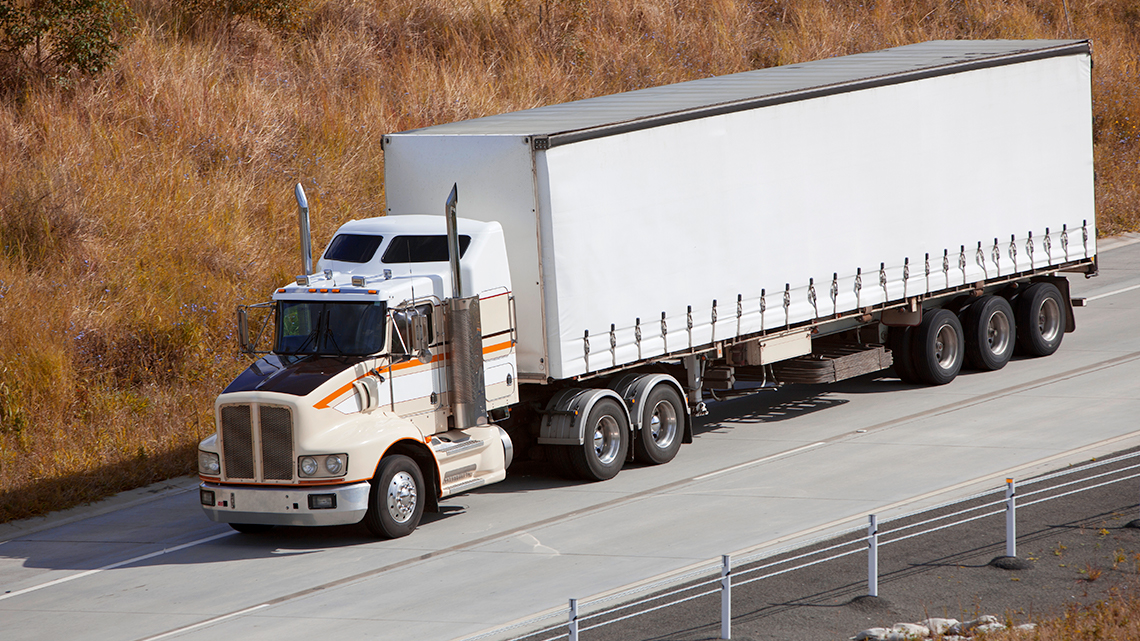
This image shows a 18-wheel truck on the road. Before very recently, all modern vehicles relied on the natural resource of gasoline and diesel. Many new models are now powered by electricity (through a battery). Which natural resource is used to make petrol?
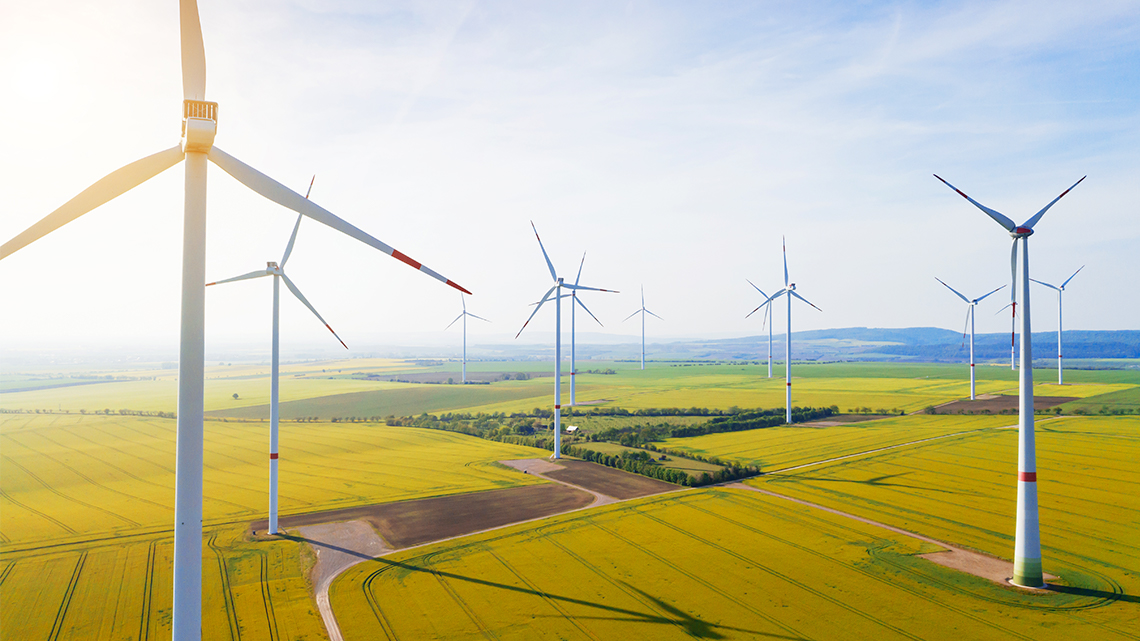
This image shows tall, white, three-arm turbines in a green farm field. One common use of this natural resource involves the capturing its movement with these turbines and turning it into electricity. Areas with many turbines are sometimes in called “farms.” Sometimes they are built on literal farms!
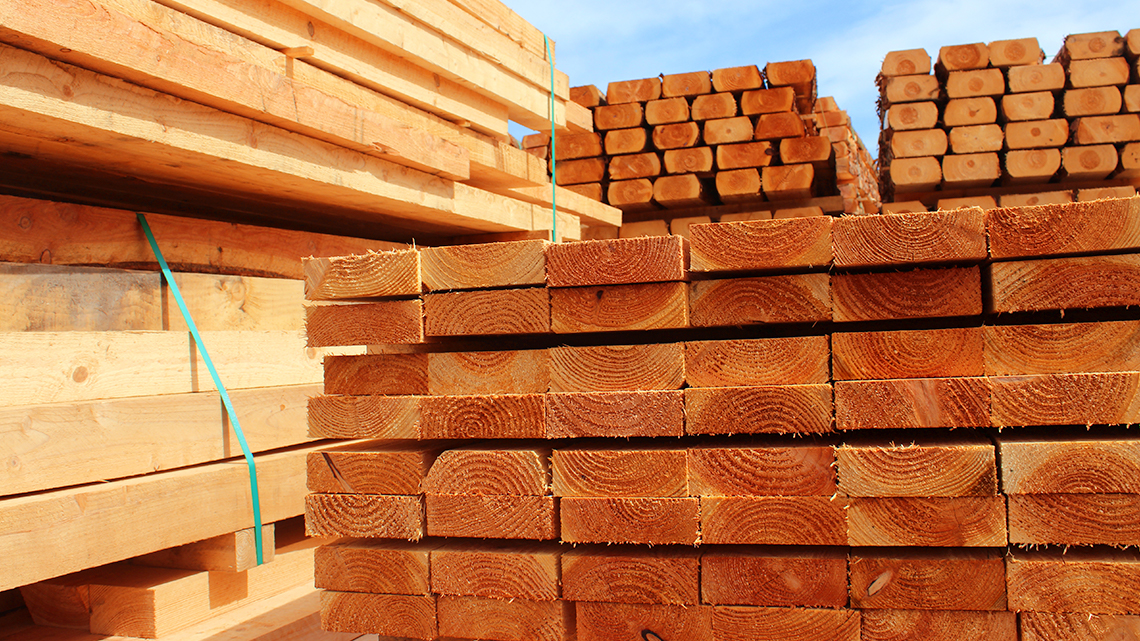
This image shows several stacks of flat timber planks. There are many uses of this natural resource, but one of the biggest impacts is when this resource is harvested and prepared for use in building and carpentry, typically as timber. Lumberjacks sometimes shout “timber!” as they cut down this resource.
Resource matching exercise
In the following worksheet, or using a method of your choice, match the resources from the previous carousels with their possible uses. Remember, some resources may have more than one use. Be sure to give a brief explanation (in point form if you wish) for each match you make.
| Natural Resource | Possible Uses |
|---|---|
| Air | |
| Trees | |
| Water | |
| Oil | |
| Minerals |
Press the ‘Activity’ button to access Resource Matching.
Action
Creating electricity from natural resources

There are natural resources found all over the world. The location in which the specific resource is found is significant because it impacts the process of removing it for human use. As we move through the learning activities in this course pack, we will explore and analyse a selection of natural resources found all over the world.
Electricity is not itself a consistent natural resource; natural resources must be transformed in some way to make electricity and transform it for regular use. In this learning activity, we will focus our attention on how a variety of areas around the world use diverse processes to create electricity.
Canada uses all the following methods of electricity production, and even sells electricity to the Unities States, but rarely appears on lists of top energy producers. This is because despite Canada’s massive geographical size, it has a relatively small population compared to other nations, meaning less electricity is needed in total.
Electricity production methods
As we explored in the Minds On section, electricity, as an energy form, can be created through harnessing wind power and waterpower. Electricity can also be created using fossil fuels, nuclear energy, and biomass as well. How electricity is made in different geographic regions depends on the characteristics of each location, the availability of resources, and the processes used to make it.
Wind power
Wind energy is increasingly popular around the world. In Ontario, wind produces around 5 percent of our electricity.
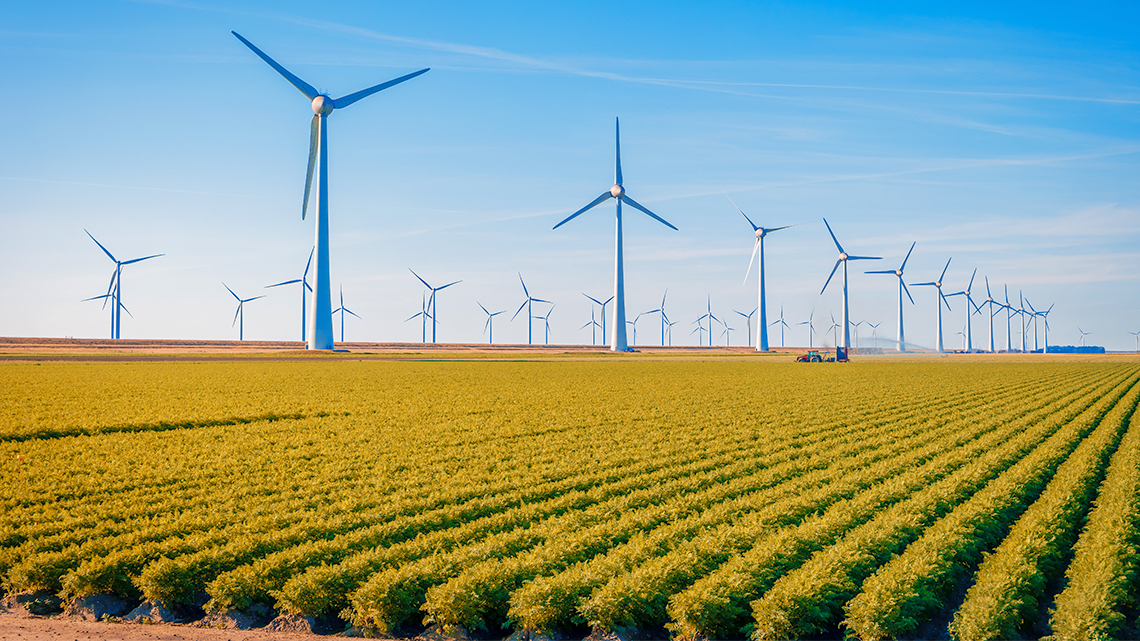
How does wind energy work?
The spinning blades catch some of the wind as it blows past, causing the blades to spin. When the blades spin, a generator begins to turn, which produces electricity.
It is estimated that over half of all countries in the world use wind farms to generate electricity.
Wind energy around the world
According to The Economic Times, using data collected in 2019:
- China is the country that uses the most wind power.
- The United States is second in the world. Together, China and The United States produce over half of the world’s electricity through wind power.
- Canada is ranked 9th in its use of wind power worldwide with the largest wind farm found in Quebec.
Sustainability of wind energy
Wind energy is considered a green, clean, and sustainable use of a natural resource because it is renewable and wind energy is clean and reliable. The downside to wind energy is the electricity and minerals needed to build the turbines. Mining those minerals is not environmentally friendly and can have serious consequences for miners.
Reflection question
- Why do you think so many countries are turning to the use of wind farms to produce electricity?
Throughout this activity, you can record your ideas digitally, orally, or in print.
Hydroelectric power
Hydroelectric energy production is popular in Ontario, and Canada in general, because of our many waterways. Hydroelectric power makes up around 25 percent of Ontario’s electricity supply.

How does hydroelectric production work?
To make hydroelectric power, water is controlled and released through the control gates of a large or small dam. From these gates, flowing water enters the power generator, where it turns turbines. The spinning of the turbines transforms the movement of the water into electrical power. To build a hydroelectric plant, there needs to be a large enough space to build the dam structure.
Hydroelectricity around the world
According to the World Economic Forum, although many countries around the world use some form of hydroelectric power, 50 percent of the world’s hydroelectric power is generated in just four countries with access to large and constantly flowing waterways:
- China
- Brazil
- Canada
- The United States
Sustainability of hydroelectric energy production

Hydroelectric power is considered a clean and sustainable source of energy because it does not generate greenhouse gases which contribute to global warming. Rivers are a renewable water resource.
Hydroelectric power is not without environmental and human concerns. Building dams in waterways is very disruptive to wildlife within and near waterways. Additionally, the building of dams means flooding areas upriver, and drying of areas downriver. Around the world, dams have resulted in the (sometimes forced) displacement of hundreds of thousands of people and the destruction of entire towns and villages.
Reflection questions:
- How might the geography of each country be significant to the four countries that produce the most hydroelectric power?
- Are there any potential dangers if more countries use hydroelectric power for electricity? Why or why not?
Press Hint to check out additional prompts.
Fossil fuels
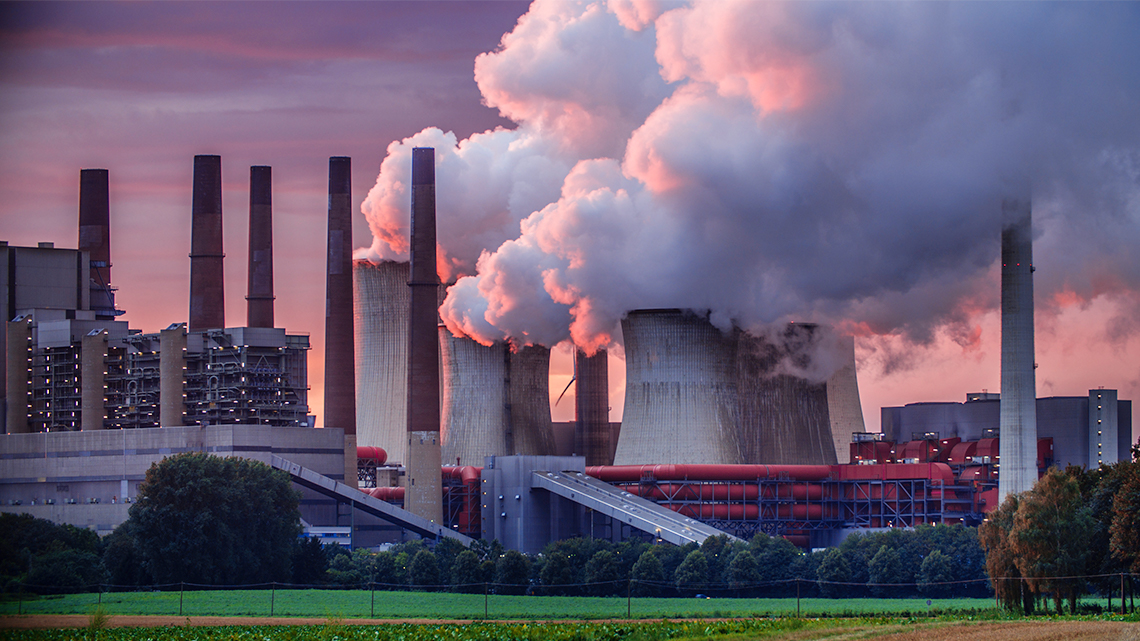
How does fossil fuel energy production work?
These fuels are called “fossil fuels” because they form deep in the ground from the organic remains of long-dead plants and animals, like fossils. The most common fossil fuels are coal, oil, and natural gas. Coal was the very first fuel used in large-scale electricity production.
During electricity production using fossil fuels, power plants burn coal, oil, or natural gas to create heat. This heat is used to boil water to make steam. The steam is pressurized and pushed through turbines that spins and generates electricity.
Fossil fuels around the world
Unfortunately, burning fossil fuels still is the most common way to convert natural resources into electricity. Fossil fuel energy is popular in less wealthy countries because coal and oil are inexpensive fuels and the power plants that use them are less complex than other types. According to the World Resources Institute, the five countries that burn the most fossil fuels are:
- China
- The United States
- India
- Russia
- Japan
Canada is 12th in this list.
Sustainability of fossil fuel electricity production

Fossil fuels are the least sustainable form of electricity production. Fossil fuels can be found anywhere in the world. Converting these fossil fuels into electricity causes emissions of carbon dioxide and other greenhouse gases to be released into the air, contributing to global warming. Because fossil fuels are formed from dead organic matter, there is a strictly limited amount of it in the world. If humanity continues to mine and burn fossil fuels for power, we will inevitably run out.
Aside from the greenhouse gas emissions, burning fossil fuels creates enormous amounts of toxic fumes that spread far from the power plants where they are burned. These fumes contribute to a variety of diseases, especially diseases of the lungs and skin. For example, children who grow up near fossil fuel plants or busy roads are significantly more likely to develop asthma and have shorter life expectancies than those who do not.
Fossil fuel electricity generation has fallen out of favour in Ontario because of their environmental impact. The last coal plant in Ontario closed in 2014. Only a single natural gas plant remains as a fossil fuel electric generating station, representing 9 percent of the total electricity supply.
Reflection questions:
- Why might these countries specifically be on the list of countries that burn the most fossil fuels?
- How sustainable is this form of creating electricity from natural resources? Why?
Nuclear power
Electricity from nuclear power is very popular in Ontario and makes up around 60 percent of Ontario’s supply of electricity. Astoundingly, all of that electricity supply is generated by only three nuclear powerplants in Ontario: one in Pickering, one in Clarington, and the third in Bruce Township.

How does nuclear power work?
Nuclear power uses the same technology as most other methods of electricity production: creating heat to make steam and spin a turbine. The difference with nuclear power is that it is a controlled nuclear reaction, and not combustion of fossil fuels, that releases heat. Uranium and other radioactive elements (found in minerals) is mined from deep underground. A nuclear reactor uses fission (breaking apart of uranium atoms) to create heat.
Nuclear energy around the world
Only 5 percent of the world’s electricity is produced through nuclear power. According to the World Energy Corporation, the five biggest nuclear energy producing countries are:
- The United States
- France (the country generates 70 percent of its electricity through nuclear energy)
- China
- Japan
- Russia
Canada is seventh on the list.
Sustainability of nuclear energy

With advances in technology since the early days of nuclear science, the process of creating nuclear energy is highly efficient and very safe. Even so, nuclear reactors need many safety features, advanced equipment, and highly educated staff in order to run, which makes them more expensive to build and maintain. Nuclear reactors have a lifespan of around 50 years, which means nuclear plants must be updated often.
Nuclear energy continues to be very controversial around the world. Even though nuclear plants do not pollute the air, nor do they produce greenhouse gases, they do produce some dangerous radioactive waste, which is harmful to the environment, animals, and humans. Storage of this waste is one of the largest challenges posed by nuclear power. Though radioactive materials are not a renewable resource, nuclear power uses so little that the Earth has enough to last for potentially thousands of years.
Nuclear power is like airplane travel: it has a very good safety record, but accidents are very serious and potentially deadly. Nuclear accidents like at Chernobyl (Ukraine, 1986) and Fukushima Daiichi (Japan, 2011) have resulted in serious contamination of the environment and the deaths of humans. The area around the Chernobyl nuclear plant will be unsafe for human habitation for potentially hundreds of years. While Chernobyl was the result of human error, Fukushima was due to a massive tidal wave following an earthquake off the Japanese coast. Though these disasters may seem extreme and the consequences may be long-lasting, far more people are killed every year by sicknesses caused by burning fossil fuels than have ever died because of a nuclear incident.
Reflection questions
- Why might these countries be the biggest producers of nuclear energy?
- If nuclear energy is considered clean and sustainable, why are there only 30 countries that use nuclear energy?
Biomass fuel
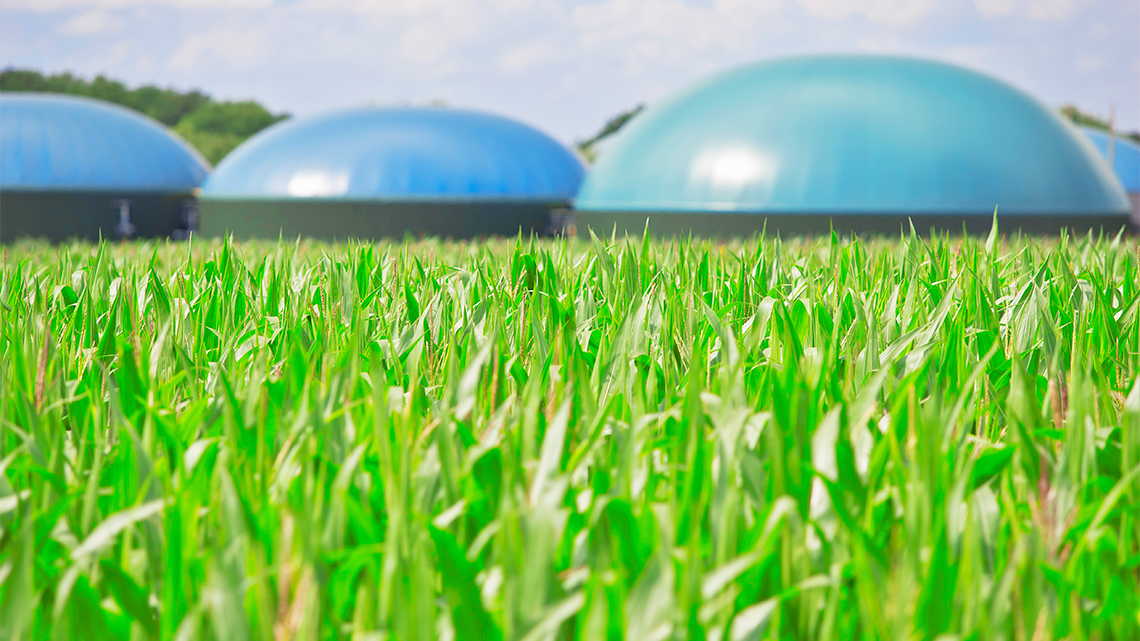
How do biofuels work?
Organic material such as wood waste, debris from forests, crops, human and livestock manure is burned, producing a biofuel which creates steam in a power plant. This steam turns a turbine, and that turning process creates electricity.
Biofuels around the world
According to the World Economic Forum, the five countries that produce the most biomass electricity are:
- The United States
- Brazil
- Germany
- China
- Argentina
Canada is eighth on the list.
Sustainability of biofuels

Biomass energy is renewable because of the products it uses as fuel. There is only a tiny bit of carbon emitted into the air (in the plants that are being burned), it is inexpensive compared to other processes (but still costly), the material can be found anywhere, it actually helps to reduce waste, and it is sustainable.
However, the process of converting biomass into energy does produce pollution when it is burned. This process could possibly cause deforestation if used too much. The energy plant itself takes up a lot of space, and it is not efficient; much of what is burnt is wasted.
Reflection questions
- There are more continents represented on this list than the other methods of processing electricity. As well, for some African and South American countries, biomass fuel is their primary energy source. Why might this be?
- If this process is considered clean and sustainable, why is it not a more prominent way to produce electricity?
Electricity production activity
You have learned about five methods to convert natural resources to electricity, including hydroelectricity, biomass fuel, wind power, fossil fuels, and nuclear power. Use the information you have learned to rank the methods from fifth place to first place, using the following set of criteria as a guideline:
Consolidation
Ranking energy processes

After learning about these five (5) methods to convert natural resources to electricity, you will now be given the opportunity to use the information you have learned to rank the methods from 5th place to 1st place, using this set of criteria as a guideline:
- Is the process clean and sustainable?
- Is the process accessible for all countries or only certain countries?
- Are there any dangers to using this method of producing electricity?
- What are the pros and cons for using this method of producing electricity?
- How is location interconnected to this method of producing electricity?
Create your ranking system in a method of your choice. Be sure to explain why each method appears in the order you decided. You may return to the information as often as you need to support your ideas.
Guiding question
Here is the guiding question that appeared at the beginning of this learning activity one last time. Use your own knowledge and the information you have explored throughout this learning activity to support your ideas.
Consider this guiding question: What factors might impact resource development?
Reflection
As you read the following descriptions, select the one that best describes your current understanding of the learning in this activity. Press the corresponding button once you have made your choice.
I feel...
Now, expand on your ideas by recording your thoughts using a voice recorder, speech-to-text, or writing tool.
When you review your notes on this learning activity later, reflect on whether you would select a different description based on your further review of the material in this learning activity.